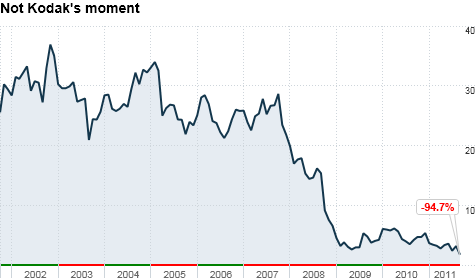Have you seen or been part of an organization that didn’t seem to know where it was going? I think all of us have had this experience at some point – I know I have. To gain an appreciation for the criticality of vision, this post is the third in a series highlighting what happens when it is absent – “vision void.” The first dealt with reasons for vision void, the second on just one of its negative impacts (fragmentation & replacement).
Today, I want to discuss another very common negative impact…one to which organizations with a long and rich heritage are especially prone. It is a “flight to the past” mindset. The most typical version of this form of “vision replacement” is that the organization reverts to a “glory days” legacy, focusing on preserving and refining “tried and true” practices at all costs – despite clear signals that the world is changing around it.
Obviously this way of thinking is especially dangerous since it ignores the current & future environment – which may be changing significantly – and therefore makes “what worked in the past” obsolete…or at least partially so. It is a “head in the sand” mentality that refuses to take a look at hard facts and make needed (and likely difficult) changes.
Why does this happen? Who’s responsible? Again, it all boils down to leadership failure. It can happen for many reasons – here are just a few of the most common: disconnect with the changing environment; failure to see that the organization has outgrown (or reached) a “past vision;” more focus on processes (refining the means) versus attention to results & purpose (the end – strategy/vision); fear of a “new vision” radically changing/destabilizing the organization; lack of understanding that visioning is one of the key responsibilities of leadership, etc.
If the above is true, and there is no compelling/clear vision of the future, is it surprising that followers revert back to a “glory days” vision? Absolutely not – nor should they be blamed for doing so. After all, it’s the last thing that most people in the organization remember was stable, compelling…and working. While leadership may complain about their followers being “stuck in the past” they have created the very conditions that encourage people to do so.
I’d like to summarize with a well-known example – Eastman Kodak. A giant and market leader in photographic film, it was the first to develop digital technology as early as the 1970s. Rather than capitalizing on this breakthrough and transforming the market, management decided it was too disruptive, threatening its traditional film business.
The outcome of ignoring changing times? – just “google it! Bankruptcy in 2012…attempting to restructure…stock trading at $0.09 (see trend below)…a tragedy caused by its “flight to the past,” despite being one of the first to hold the “keys to the future!”
Picture: innovationtrail.com






[…] Impact of Vision Void – “Flight to the Past” […]
Communicating a vision is hard work! Sometimes, I think the people implementing the “future” are so busy that communication falls by the way side. Innovators beware!
Yes, I agree wholeheartedly. Unfortunately I think there are too many senior managers that don’t see visioning and strategy as “real work” that is a “full time job.” Since they’ve come up through mid-level management positions, their natural instinct often directs them towards operational management and mid-term outcomes. The result? A listing ship with no one at the helm. Thanks so much for your constant encouragement and valuable insights!